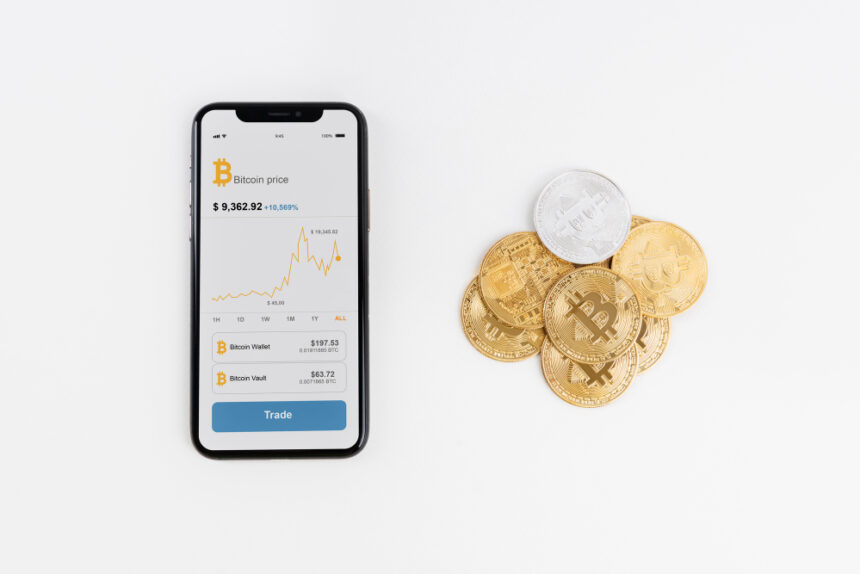Introduction
In today’s fast-paced digital world, access to financial services remains a critical challenge for billions. Despite advances in global banking, over 1.4 billion adults globally remain unbanked, with limited or no access to traditional banking systems. This exclusion hinders opportunities for economic participation and growth, perpetuating cycles of poverty and financial insecurity. However, a new financial revolution is changing this narrative: cryptocurrency.
Cryptocurrency, once seen only as a speculative investment tool, has evolved into a powerful instrument for promoting financial inclusion. For individuals living without access to traditional financial services, cryptocurrencies offer a decentralized, borderless, and accessible alternative. This transformative technology holds the potential to level the playing field and bring underserved populations into the global economy.
In this article, we’ll explore how cryptocurrency is bridging the financial gap for the unbanked across the globe, empowering people with the tools they need to save, invest, transact, and thrive in today’s digital economy.
The Unbanked and the Financial Divide
Before diving into the crypto solution, it’s essential to understand the scope of financial exclusion:
- Over 1.4 billion unbanked adults globally (World Bank, 2021)
- Most live in developing countries, with limited infrastructure
- Barriers include lack of identification, geographical isolation, mistrust in institutions, and high fees
For many, the nearest physical bank may be miles away. Others face discrimination, lack of documentation, or prohibitive costs just to open or maintain a basic account. This leaves millions reliant on cash, vulnerable to theft, and without the ability to build credit, save securely, or access loans.
Enter Cryptocurrency: A Decentralized Financial Solution
At its core, cryptocurrency is a digital currency that uses encryption and decentralized blockchain technology to operate without a central authority, such as a bank or government.
Some of the key features include:
- Decentralization: No central institution controls the network
- Transparency: All transactions are recorded on a public ledger
- Borderless Access: Users can send or receive funds anywhere in the world
- Low Transaction Costs: Especially compared to traditional remittance services
These features make cryptocurrency especially appealing for those excluded from the traditional financial system.
How Cryptocurrency Promotes Financial Inclusion

1. Easy Access via Mobile Phones
In regions where banks are scarce, smartphones and mobile networks are booming. Many unbanked individuals have access to a mobile phone, even if they don’t have a bank account.
Cryptocurrency wallets—apps like Trust Wallet, MetaMask, or Coinbase Wallet—allow anyone to store, send, and receive money directly from a smartphone. All that’s needed is an internet connection.
This opens up a world of financial tools without the need for traditional paperwork, branch visits, or costly fees.
2. Bypassing Traditional Barriers
The traditional banking system requires various forms of identification, credit history, and proof of residence—things many unbanked individuals lack. Cryptocurrency removes these hurdles.
With crypto, users can create a wallet without identification, making it far more accessible. While this has sparked debates about privacy and regulation, it undeniably expands access for underserved populations.
3. Reducing Remittance Costs
Many families in developing countries rely on money sent home from relatives abroad. These remittances are often subject to high fees from companies like Western Union or MoneyGram—sometimes taking up to 10% or more of the amount sent.
Cryptocurrency offers an alternative with low fees and near-instant transfers, especially with blockchains like Stellar, Ripple, or Lightning Network for Bitcoin.
For example, a Filipino worker in Dubai could send money back home using a stablecoin like USDC or USDT with just a fraction of the fee—and the family can cash it out via local peer-to-peer exchanges or spend it digitally.
4. Micro-Savings and Investments
For many low-income individuals, traditional banks are not conducive to saving. Minimum balance requirements, fees, and lack of trust deter many from even trying.
Cryptocurrency offers micro-saving options—users can store digital assets securely and even earn interest through platforms like Aave, Compound, or Binance Earn.
These tools allow unbanked people to grow their assets in ways never possible before.
5. Access to Microloans
Crypto-based decentralized finance (DeFi) platforms are also making waves by offering loans without the need for credit checks. Instead, users provide crypto as collateral to borrow other assets.
Some protocols are experimenting with reputation-based lending or community-driven microloans, which could dramatically open up credit opportunities for those traditionally excluded from banks.
Real-World Examples of Crypto Empowering the Unbanked
El Salvador: The Bitcoin Experiment
In 2021, El Salvador became the first country to adopt Bitcoin as legal tender. The government launched the “Chivo” wallet, aiming to provide financial services to the country’s large unbanked population.
While the rollout has had mixed results, it proved that governments can use cryptocurrency to attempt large-scale financial inclusion experiments.
Nigeria: Rising Crypto Usage Amid Inflation
Nigeria has one of the highest crypto adoption rates globally, driven largely by necessity. With the naira suffering from inflation and restrictions on foreign currency access, citizens turned to crypto for:
- Preserving wealth
- Sending remittances
- Conducting business internationally
Peer-to-peer platforms like Paxful and Binance P2P became lifelines for many.
Kenya: Mobile and Crypto Synergy
Kenya’s mobile money platform M-Pesa revolutionized digital finance in Africa. Now, with the integration of crypto services, users can convert between M-Pesa and crypto, enabling even more financial flexibility.
This shows the potential of hybrid systems, combining mobile money and cryptocurrency to serve more people effectively.
Stablecoins: Solving the Volatility Problem
One of the main concerns with cryptocurrency is its price volatility. This is where stablecoins come into play. Stablecoins are digital currencies pegged to a stable asset, like the U.S. dollar.
Popular stablecoins include:
- USDT (Tether)
- USDC (USD Coin)
- DAI (decentralized and crypto-collateralized)
These tokens allow users to enjoy the benefits of crypto—speed, low fees, accessibility—without worrying about the price dropping drastically overnight.
Challenges and Risks in Crypto-Based Financial Inclusion
While the promise of cryptocurrency is huge, there are still significant challenges to overcome:
1. Regulatory Uncertainty
Governments around the world are still trying to figure out how to regulate crypto. Some have embraced it, others have banned it entirely. This uncertainty can hinder adoption and create instability.
2. Lack of Education
Understanding how cryptocurrency works is not easy. For many unbanked users, financial literacy is already low—adding technical complexity increases the barrier to entry.
Efforts must be made to provide education, training, and support for crypto adoption to succeed.
3. Internet and Tech Limitations
Even though smartphone usage is widespread, reliable internet and electricity are still lacking in some remote areas. Infrastructure improvements are necessary for crypto adoption to truly scale.
4. Scams and Fraud
The decentralized nature of crypto means there are fewer safeguards. Scams, Ponzi schemes, and phishing attacks are common and often target uninformed users.
Protecting the vulnerable requires a combination of education, tools, and perhaps some degree of regulation.
The Future: Crypto as a Gateway to the Global Economy
The evolution of cryptocurrency is opening doors to a truly inclusive global financial system. As adoption spreads and technologies mature, we can expect to see:
- More user-friendly wallets and interfaces
- Integration with local currencies and mobile money
- Growth in decentralized ID solutions for access without documentation
- Governments and NGOs leveraging crypto for aid distribution
Already, we’ve seen organizations like the UNICEF Innovation Fund investing in blockchain startups that aim to serve underbanked populations.
Cryptocurrency as a Catalyst for Change
Cryptocurrency is not a silver bullet, but it is a powerful tool that holds the potential to transform lives. For billions who have been excluded from the financial system, it offers a way in—a chance to save, earn, borrow, invest, and participate in the global economy.
The path forward will require collaboration between developers, governments, NGOs, and communities. With thoughtful implementation and a focus on inclusion, crypto can be the bridge that finally connects the unbanked to the future of finance.

